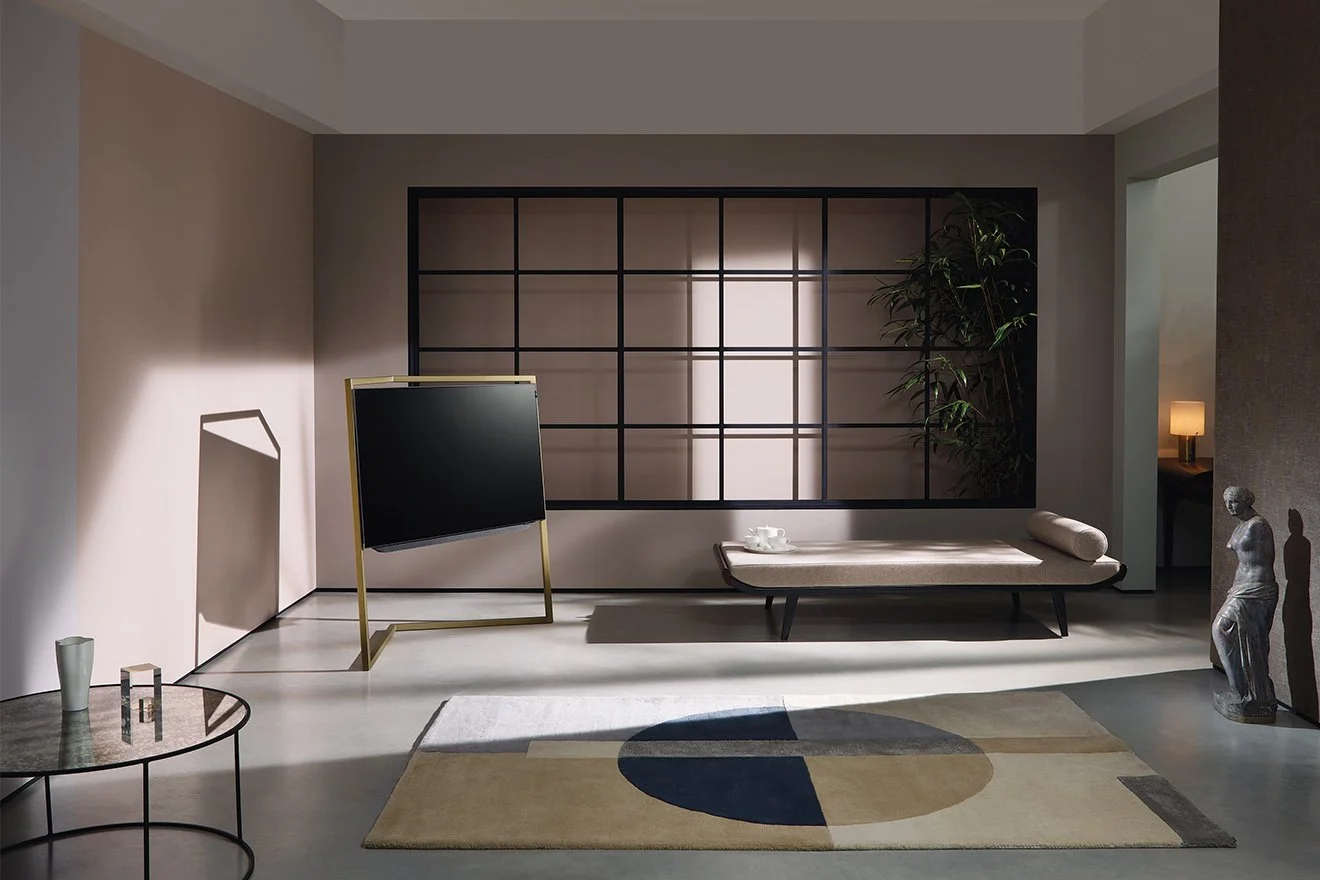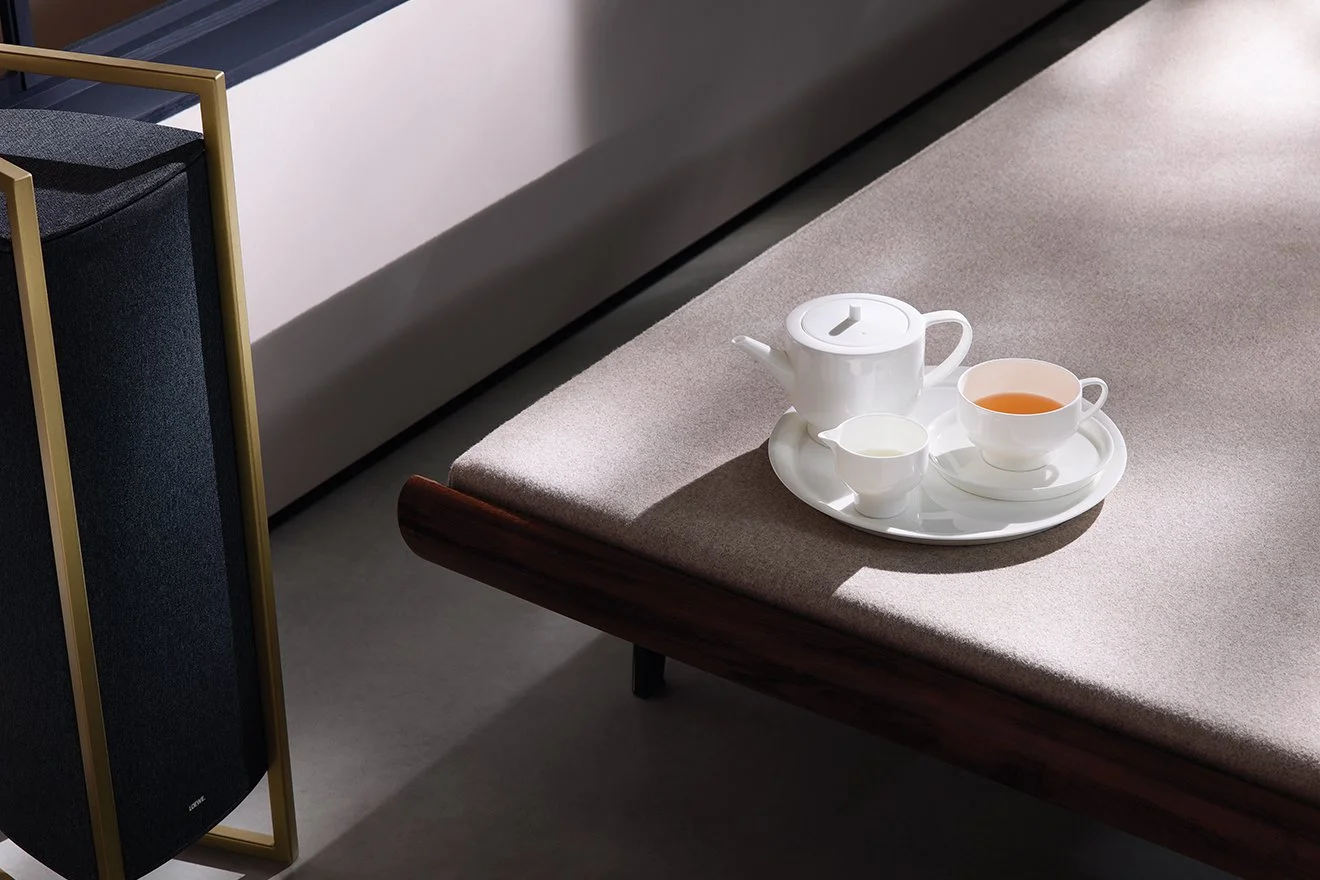Loewe: Design of a Sculptural Icon
Television design that reaches beyond the screen. Interview with Charlie Cann, Head of Marketing at Loewe and Bodo Sperlein, Loewe’s Creative Director.
Televisions surround us in many aspects of our daily lives, from the ones in our homes to the screens we see at work, whilst shopping, in bars and even during travel. Many televisions are purchased for what the screen can provide with no consideration to how this product will interact with the surrounding interior. Often unsightly black boxes of wires and cables, it is time to discover a brand that considers television design on a wider scale. I had the great pleasure of interviewing Head of Marketing Charlie Cann and Creative Director of Loewe, Bodo Sperlein to find out what makes a Loewe design stand out above the rest.
Comments below from Charlie Cann, head of marketing at Loewe:
Loewe is known for its streamlined sculptural approach to television design. How has this developed and transformed over the years?
Looking back at the archives Loewe has for a long time, since the 1940’s in fact, placed a strong emphasis on design. But it was in the 1980’s with the growth of competition from a more global Asian centric electronics industry, spearheaded by the likes of Sony, that Loewe started using design to differentiate its products and move towards a more premium positioning. This move can be illustrated with the launch of the Art 1 TV in 1985 which offered a unique, sophisticated, minimal aesthetic. The Loewe Art TV proved a huge success becoming a design icon and deserving a place within a collection of the Museum of Modern Art in New York. That basic strategy continues to this day although the design style has evolved in line with current trends and there are opportunities for new form factors afforded by advances in technology, such as wafer-thin OLED screens. Today Loewe’s approach is one of a less austere and warmer minimalism seeking a better ‘fit’ within consumers homes, much in the same context as a piece of furniture. Choice of materials is a key component of this approach and so as well as strong visual design, you will see a return to materials such as wood and inclusion of fabrics within today's ranges.
From a design perspective, have our attitudes on televisions changed and are new generations associating differently with television in its current form?
The basic form of a TV has changed over the years from big boxy cathode ray tubes with small screens to flat TVs with larger and larger screens and much higher resolution. This has clearly changed how TVs fit within our living space and has, for example, placed a new emphasis on wall mounted formats. More recently new content delivery technologies such as IPTV have enabled consumers to watch TV on a range of devices from smartphones to PC’s to tablets. This provides a more individual and flexible TV watching format for younger generations and early life-stages, but without doubt the family’s main TV screen continues, as always, to be the centre of gravity for family nights in.
As many more of us are becoming design conscious within our own homes, how important is it for Loewe to combine visual design with technology such as the Loewe Bild 9?
As a premium brand we have a unique opportunity not only to combine state-of-the-art technology with strong visual design but also a high-level craftsmanship. Together these elements deliver a special quality of product which consumers can take real delight in – something that mass brands simply can’t replicate. Lower volume premium products like Loewe bild 9 are a good example of this approach with its hand-made, beautifully finished steel frame which offers a real wow factor when seen in the flesh.
What sets Loewe above the rest from a design perspective?
In terms of design detail, materials and craftsmanship its very difficult for price-driven mass brands to replicate Loewe’s positioning. Whilst we procure the best technological components on the global market most of Loewe’s structural and visual components are made in Germany or close by. This emphasis on smaller specialist producers provides a high level of quality and finish on key tactile components made from high-end materials such as aluminium and wood. Its almost impossible for this to be replicated in a mass manufacture environment. Of course, Loewe TV’s are a little more expensive as a result and will not be on everyone’s shopping list, but this provides consumers with welcome choice in a consumer electronics industry increasingly dominated by just a few larger players.
You have expanded out of the television and into speaker systems. How important was it to extend the designs from the television and incorporate these into complimenting speakers?
Loewe has a strong heritage in audio going right back to its initial business making radios in the 1930’s, before the birth of television, and also in the development of the first cassette recorder in 1950’s. Since the very beginning of TV Loewe has always taken audio very seriously believing it a crucial part of the television experience, innovations include launching Europe’s first stereo TV in 1981. In latter years Loewe has been consistent in integrating the finest audio systems into its TVs, critically with front-facing speakers, when many flat screen TV manufacturers have compromised on audio to deliver ever slimmer screens - the result being that consumers often need to incorporate an unsightly soundbar adding unnecessary clutter to their set-up. For consumers who want to expand their audio systems, it’s important that they can do so within the same aesthetic. This means not only complementary designed speakers but also a ‘system’ approach which banishes clutter and simplifies the user experience. Loewe’s unique system integrates multi-channel audio decoding within the TV and the amplifier within the subwoofer meaning there’s no need for an additional AV receiver. This enables a simplified set-up and with auto-signal-detection the whole audio system will power up automatically when the TV is switched on and can be operated just with the TV remote. Loewe’s audio range is developed in-house and the range, including klang 1 and the wireless klang 5 and klang 9 systems, is set to grow.
Comments below from Bodo Sperlein, Loewe’s creative director:
How does a design concept evolve when looking to create a sculptural model such as the Bild 5 and 9?
The aim for both the bild 5 and bild 9 was to create a TV which becomes a focal point, an object which enhances the aesthetic of your home. For the bild 5 I wanted to experiment with wood - a material which had lost its validity in TV production since the 1970s. I looked to carpentry and fine furniture and wanted to bring this traditional craftsmanship into contemporary technology design. The bild 9 is heavily influenced by line sculptures and contemporary art house jewellery, as the frame acts as a setting for a precious gem: the OLED panel. This highlights its incredible thinness and creates a sculptural form that looks equally exciting when in and out of use.
What is the future of design for Loewe?
Loewe’s commitment to creating design-led products is critical to the brand DNA. As one of the few premium TV brands, aesthetic is very important to Loewe’s clients, who are usually design-conscious and want to have a TV which is more than just a black glass panel. Commented Bodo Sperlein Loewe’s creative director: “Currently I’m designing products for Loewe which combine technology with a sculptural or furniture-style exterior in order to bring together cutting-edge technology and statement aesthetics.” Expect future Loewe products to get even more exciting!
It is so refreshing to see technology designs that consider their surroundings, becoming sculptural works of art and something beautiful to view when switched off. In a time where televisions are still a central focus of many living spaces, Loewe has managed to go where many technology companies are yet to step foot, into the world of art, interiors and beauty.









